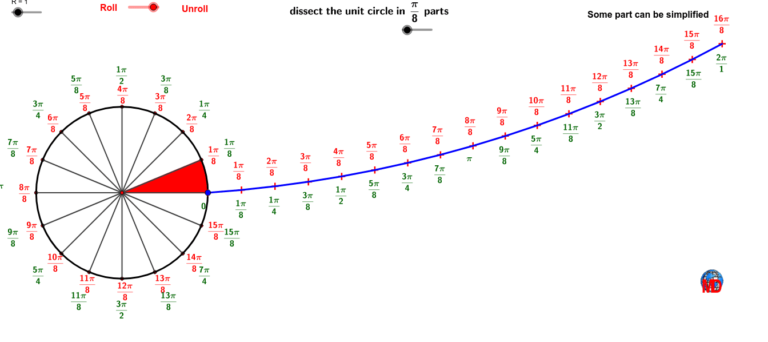The unit circle, a fundamental concept in trigonometry, is more than just a mathematical abstraction; it’s a bridge to understanding the relationships between angles and lengths in a circle with a radius of one. This seemingly simple figure, centered at the origin of a coordinate plane, is pivotal in defining the sine, cosine, and tangent functions, which are essential in various fields of science, engineering, mathematics, and beyond.
The Geometry and Significance of the Unit Circle
At its core, the unit circle is a circle with a radius of exactly one unit, positioned so that its center coincides with the origin (0,0) of a Cartesian coordinate system. This positioning allows for an elegant and intuitive mapping of angles to points on the circle’s circumference and, consequently, to pairs of coordinates. These coordinates correspond to the values of the cosine and sine of the angle formed by the line connecting the origin to a point on the circle and the positive x-axis.
One of the most profound aspects of the unit circle is how it encapsulates the periodic nature of trigonometric functions. As one moves around the circle, the sine and cosine values oscillate between -1 and 1, reflecting their periodicity in a visually intuitive manner. This oscillation lays the groundwork for understanding complex waveforms and oscillatory phenomena in physics and engineering.
The Unit Circle and Trigonometric Functions
Diving deeper, the unit circle is intrinsically linked to the sine and cosine functions. For any given angle θ (theta), measured in radians from the positive x-axis, the coordinates (x, y) of the corresponding point on the unit circle’s circumference are equal to (cos(θ), sin(θ)). This relationship provides a geometric interpretation of these functions, making the unit circle a powerful tool for visualizing and understanding trigonometry.
The unit circle also introduces the concept of reference angles, which are used to simplify the process of finding trigonometric function values for angles greater than 90 degrees. By understanding that the trigonometric functions are essentially repeated and mirrored across the four quadrants of the circle, one can use the unit circle to easily determine the sine, cosine, and tangent of any angle.
Applications of the Unit Circle
The applications of the unit circle extend far beyond the classroom; they permeate various scientific and engineering disciplines. In physics, the unit circle is instrumental in analyzing rotational motion, waves, and oscillations, providing a geometric perspective on phenomena such as the phases of the moon and the oscillation of a pendulum. In engineering, the principles of the unit circle underpin the design and analysis of systems involving rotational motion, such as turbines, gears, and even electronic circuits that utilize alternating current.
Moreover, the unit circle is a cornerstone in the field of complex numbers, where it helps to visualize complex number operations, including multiplication and finding roots. In this context, the unit circle facilitates the understanding of Euler’s formula, which establishes a profound connection between trigonometry and complex exponential functions.
Beyond the Basics: Expanding the Unit Circle’s Horizons
While the unit circle is foundational in trigonometry, its influence extends to more advanced mathematical concepts. For instance, in calculus, the unit circle is key to understanding the derivatives and integrals of sine and cosine functions, which are crucial for solving problems involving rates of change and areas under curves. In the realm of Fourier analysis, the unit circle provides a geometric framework for understanding how complex periodic functions can be broken down into simpler trigonometric components.
Conclusion: The Enduring Legacy of the Unit Circle
In conclusion, the unit circle is much more than a simple geometric figure; it is a fundamental concept that underpins many areas of mathematics and its applications in science and engineering. By providing a geometric interpretation of trigonometric functions, facilitating the visualization of periodic phenomena, and serving as a basis for more advanced mathematical concepts, the unit circle remains an indispensable tool in the mathematical toolkit. Whether one is delving into the basics of trigonometry or exploring complex mathematical theories, the unit circle is a constant companion, guiding the way to deeper understanding and innovation.

